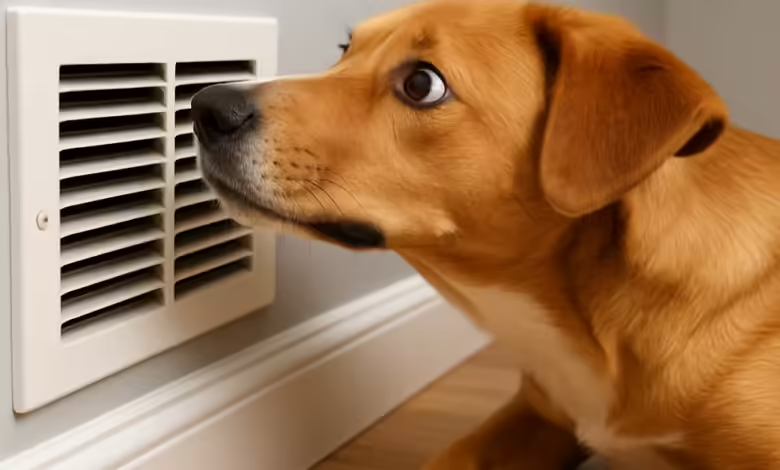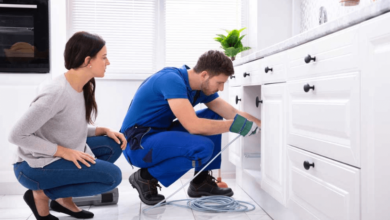Are Your Pets Making Your Air Ducts Dirtier Than You Think?

Introduction
Pets bring joy, companionship, and warmth to our homes—but they can also bring unexpected problems when it comes to indoor air quality. If you’ve noticed more dust in your home, persistent allergies, or a lingering musty smell, your furry friend might be playing a bigger role than you realize. One commonly overlooked area affected by pet ownership is your HVAC system—specifically, your air ducts. Pet dander, fur, and dirt can circulate through your ductwork, accumulating over time and impacting your home’s environment. This is why regular air duct cleaning NJ services are especially important for pet owners looking to maintain a clean and healthy living space.
In this guide, we’ll explore how pets affect your HVAC system, the warning signs of dirty ducts, and what you can do to keep your indoor air as fresh as possible.
How Pet Hair and Dander Get into Air Ducts
Constant Shedding Means Constant Circulation
Most pets shed to some degree, and those tiny hairs and flakes of skin known as dander are easily lifted into the air. Once airborne, they’re pulled into your HVAC system through intake vents, where they begin circulating throughout your home. Over time, this debris sticks to the inside of your ductwork, forming a layer of dust and allergens.
Even if you vacuum regularly and groom your pets, it’s nearly impossible to eliminate all pet hair and dander from your living environment. The real challenge is that most of this buildup occurs where you can’t see it—in the ducts behind your walls and ceilings.
Why Pet Owners Face Unique Air Quality Challenges
Dander as a Potent Allergen
Pet dander is one of the most common indoor allergens and can remain in the air for long periods. When it collects inside air ducts, the HVAC system distributes it every time the heat or air conditioning is turned on. This continuous recirculation can lead to chronic respiratory problems, especially in sensitive individuals.
Accumulation of Pet-Related Debris
In addition to hair and dander, pets track in dirt, pollen, and other contaminants from outside. These particles are often picked up by return vents and deposited into the ductwork. The more pets you have, and the more time they spend indoors, the greater the amount of debris accumulating inside your air ducts.
Signs Your Pets Are Dirtying Your Air Ducts
Increased Allergy Symptoms
If family members start sneezing more often, have irritated eyes, or experience sinus issues that weren’t present before, your ducts could be circulating allergens. While these symptoms can be caused by seasonal changes, they often persist year-round in homes with pets and unclean ducts.
More Dust Than Usual
When air ducts are clogged with hair and dander, the HVAC system blows fine debris back into your rooms. You may notice that surfaces in your home get dusty again shortly after cleaning. This cycle will continue until the root of the problem—the ductwork—is addressed.
Odors That Don’t Go Away
Pet smells can linger long after cleaning if the source of the odor is trapped inside your air system. Dirty ducts often emit a musty or sour smell, especially when the HVAC turns on. In some cases, the trapped dander may become moist due to humidity, creating an even more pungent odor.
Read Also: How Quickly Can a Plumber Respond to an Emergency in Tacoma?
The Role of HVAC Filters and How Pets Affect Them
Filters Fill Faster in Pet-Friendly Homes
HVAC filters are designed to trap airborne particles before they enter the system, but in homes with pets, these filters clog much more quickly. Once saturated, they become ineffective at capturing debris, allowing dander and fur to enter the ductwork freely.
Changing filters more frequently—every 30 to 60 days for pet owners—is critical. However, this alone is not enough to stop the buildup already inside the ducts.
Why Air Duct Cleaning Is Crucial for Pet Owners
Deep Cleaning Where You Can’t Reach
Regular vacuuming and filter changes help, but only a professional duct cleaning can remove debris from deep inside your ductwork. Over time, layers of pet-related particles accumulate along the duct walls, becoming breeding grounds for mold, bacteria, and allergens. These are areas that homeowners simply can’t reach on their own.
A comprehensive duct cleaning by experienced technicians uses high-powered vacuums, agitation devices, and HEPA filtration to remove the contamination, ensuring your home’s air is clean and healthy once again.
Protecting Your HVAC System from Damage
Dirty ducts force your HVAC system to work harder. Excessive pet debris can clog components, restrict airflow, and reduce efficiency. In the long run, this extra strain can lead to increased energy bills, more frequent breakdowns, and a shorter lifespan for your heating and cooling units.
By investing in periodic air duct cleaning NJ services, you’re not only improving air quality but also protecting your home’s most important mechanical systems.
How Often Should Pet Owners Schedule Air Duct Cleaning?
Factors That Influence Frequency
There’s no one-size-fits-all answer, but most experts recommend cleaning your ducts every 3 to 5 years. For pet owners—especially those with multiple animals or allergy sufferers in the household—cleaning every 2 to 3 years is ideal.
Other factors that may require more frequent cleaning include:
- High-shedding breeds like Huskies or German Shepherds
- Pets that spend time outdoors and track in debris
- Households with residents who have asthma or allergies
Professional HVAC technicians can also inspect your ductwork and give personalized recommendations based on your home’s condition and your pets’ habits.
Preventative Measures to Reduce Pet Debris
Groom Your Pets Regularly
Brushing your pets outdoors and bathing them routinely can significantly reduce the amount of hair and dander in your home. This means less material entering your ducts and better air quality for everyone inside.
Use HEPA Filters and Air Purifiers
Installing high-efficiency particulate air (HEPA) filters and portable purifiers can capture airborne pet particles before they reach the ducts. While they don’t eliminate the need for cleaning, they’re a useful tool in maintaining clean air between duct service appointments.
Choosing the Right Air Duct Cleaning Company in NJ
What to Look For
Not all duct cleaning companies are created equal. Look for professionals that are NADCA-certified (National Air Duct Cleaners Association), use modern equipment, and offer transparent pricing. Reputable companies will conduct a full inspection, take before-and-after photos, and explain the process clearly before starting.
Ask if the company uses negative-pressure vacuum systems and ensures all vents, return registers, and HVAC components are included in the cleaning.
Conclusion
Owning a pet brings a lot of joy—but it also adds responsibility when it comes to home maintenance. Pet hair, dander, and dirt can silently accumulate in your air ducts, affecting indoor air quality, comfort, and even your health. By investing in professional air duct cleaning NJ services, especially if you have pets, you’re taking a proactive step toward a healthier, cleaner, and more energy-efficient home. Don’t wait until allergy symptoms or odors become unmanageable—your HVAC system and your lungs will thank you.




